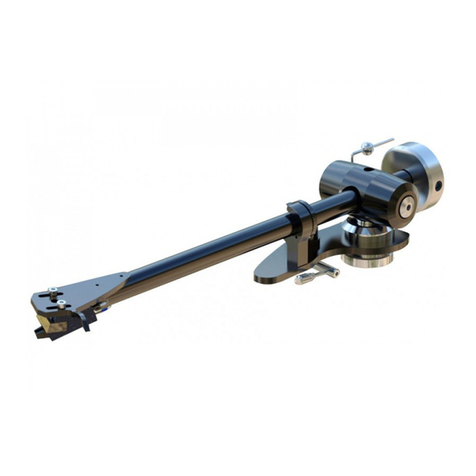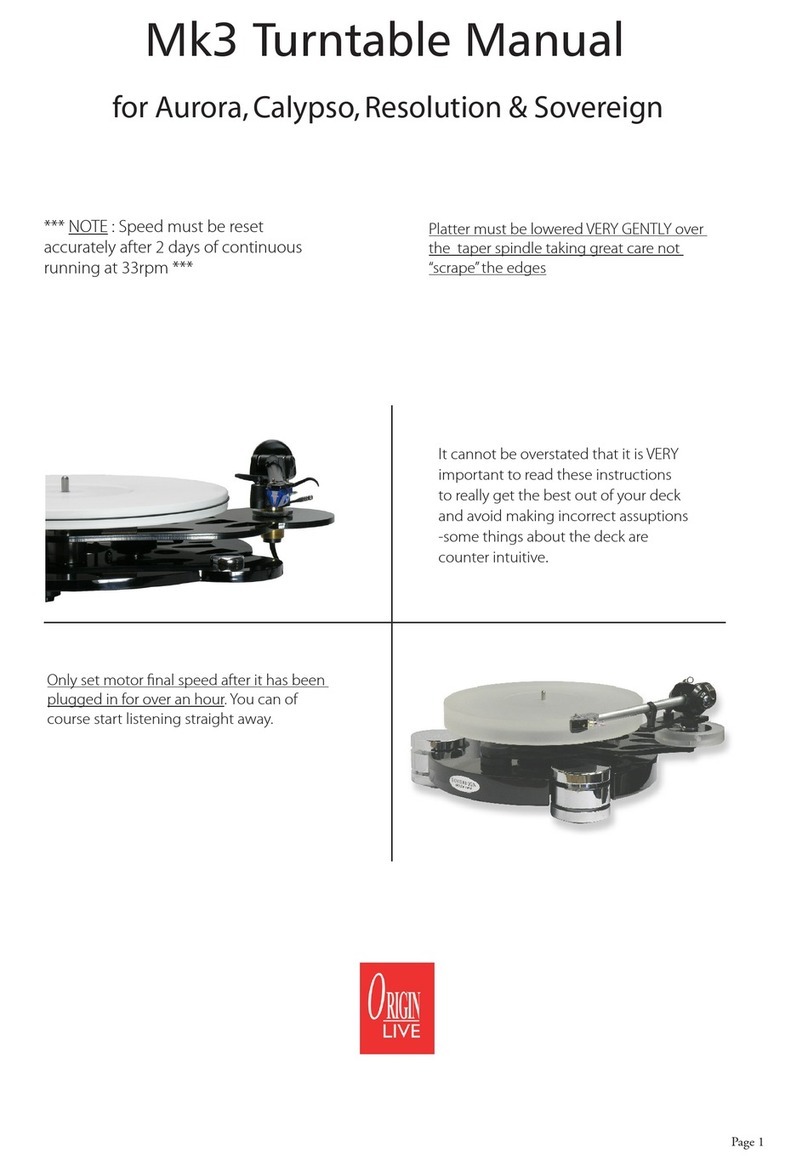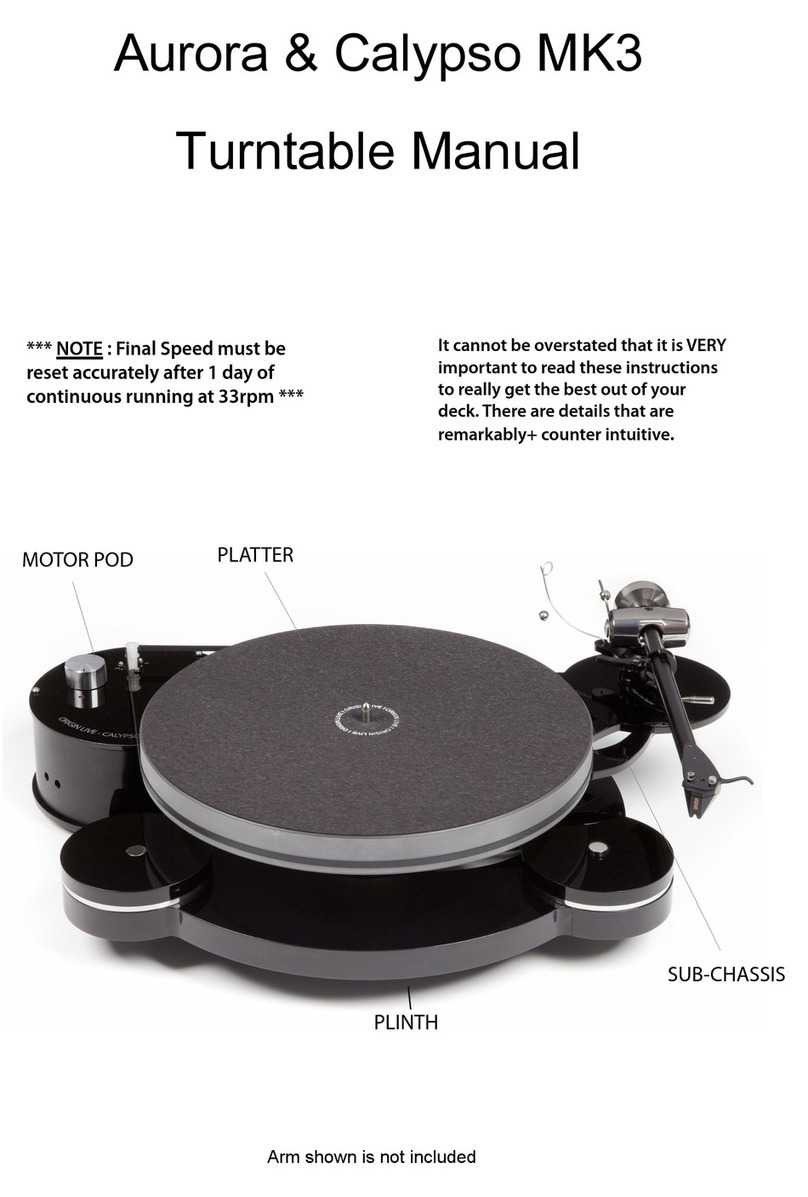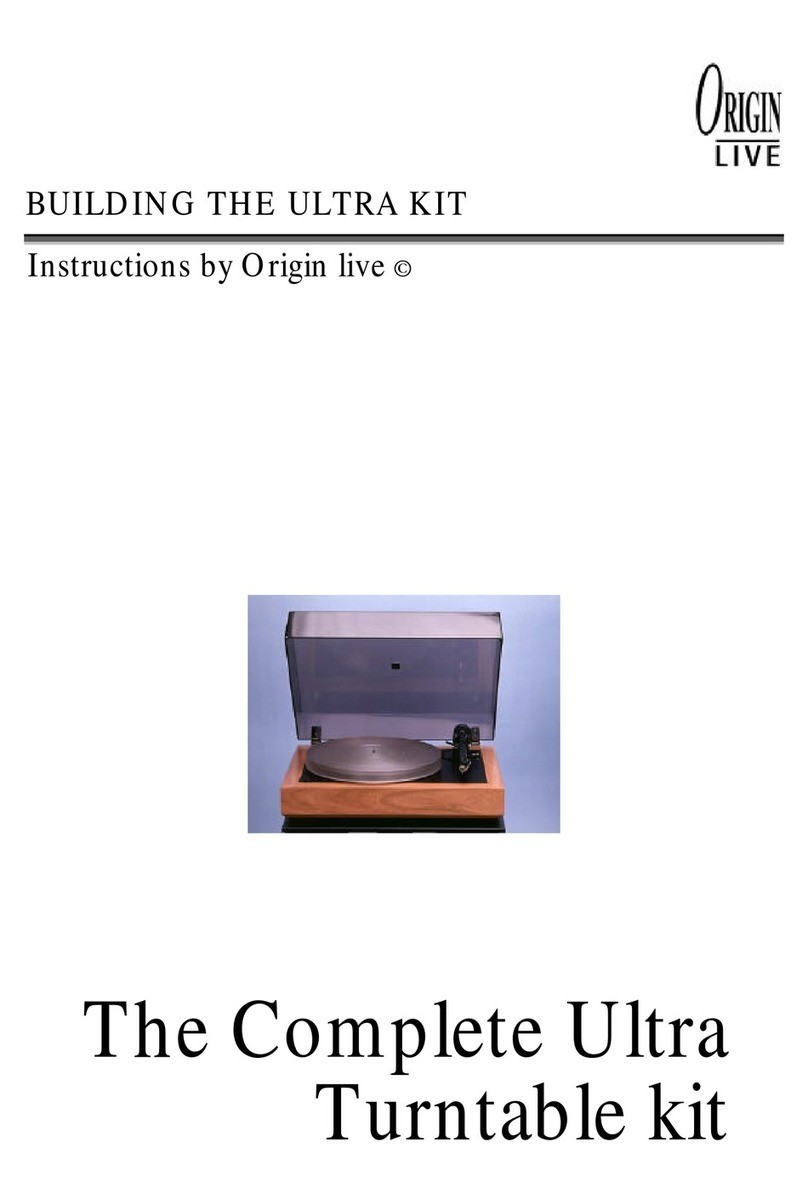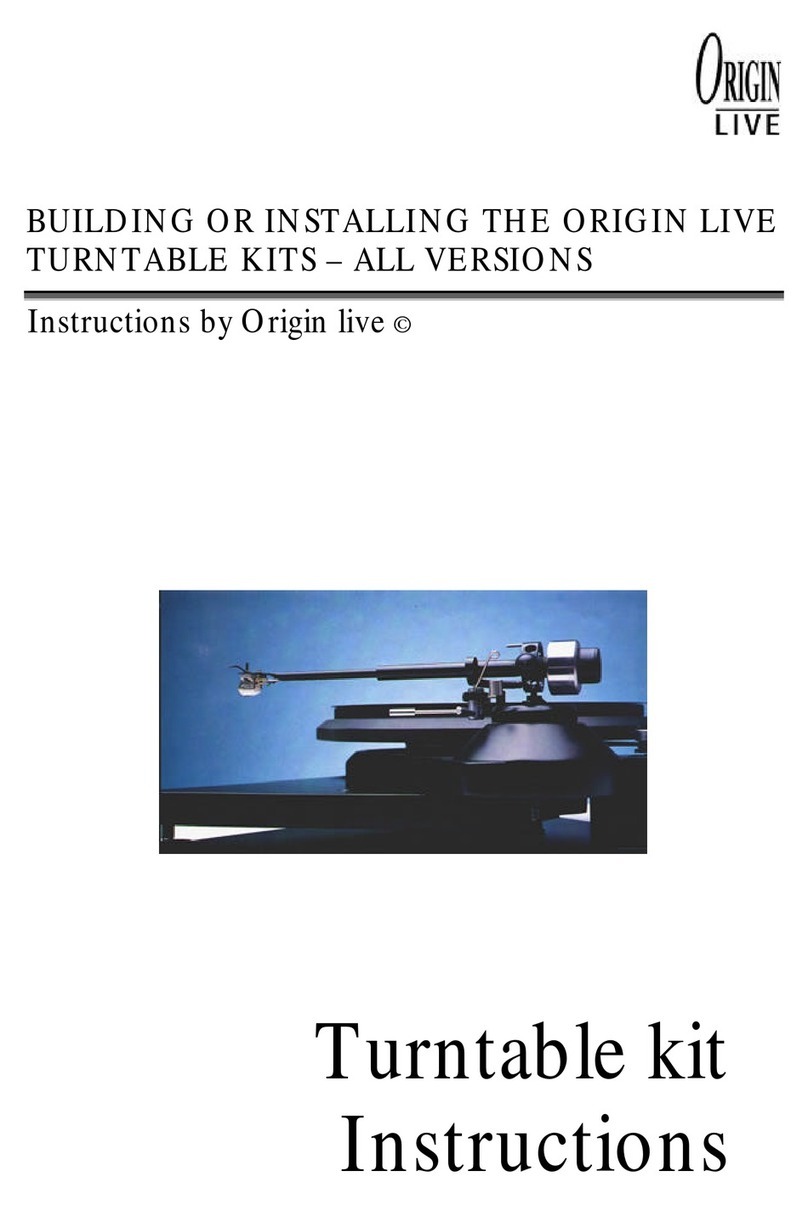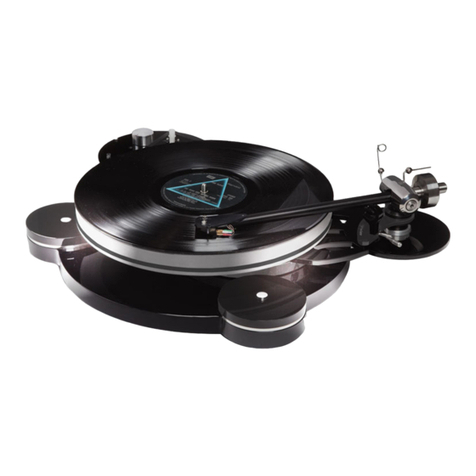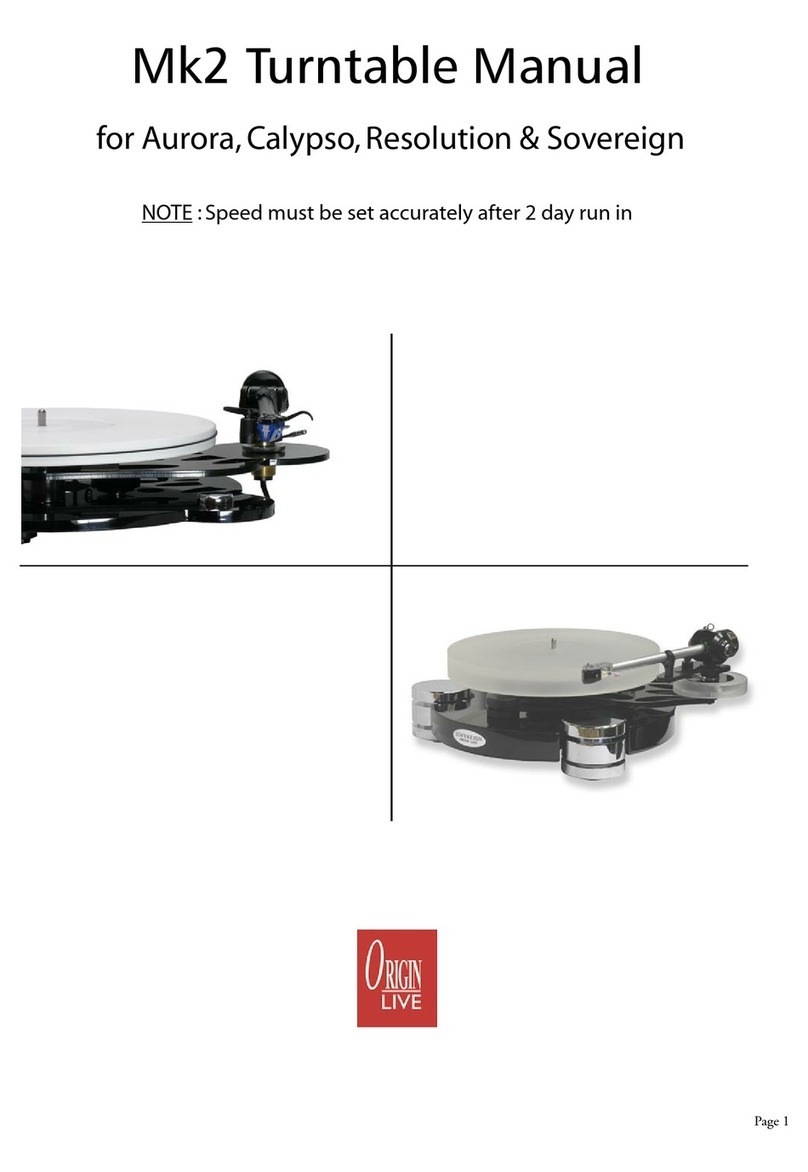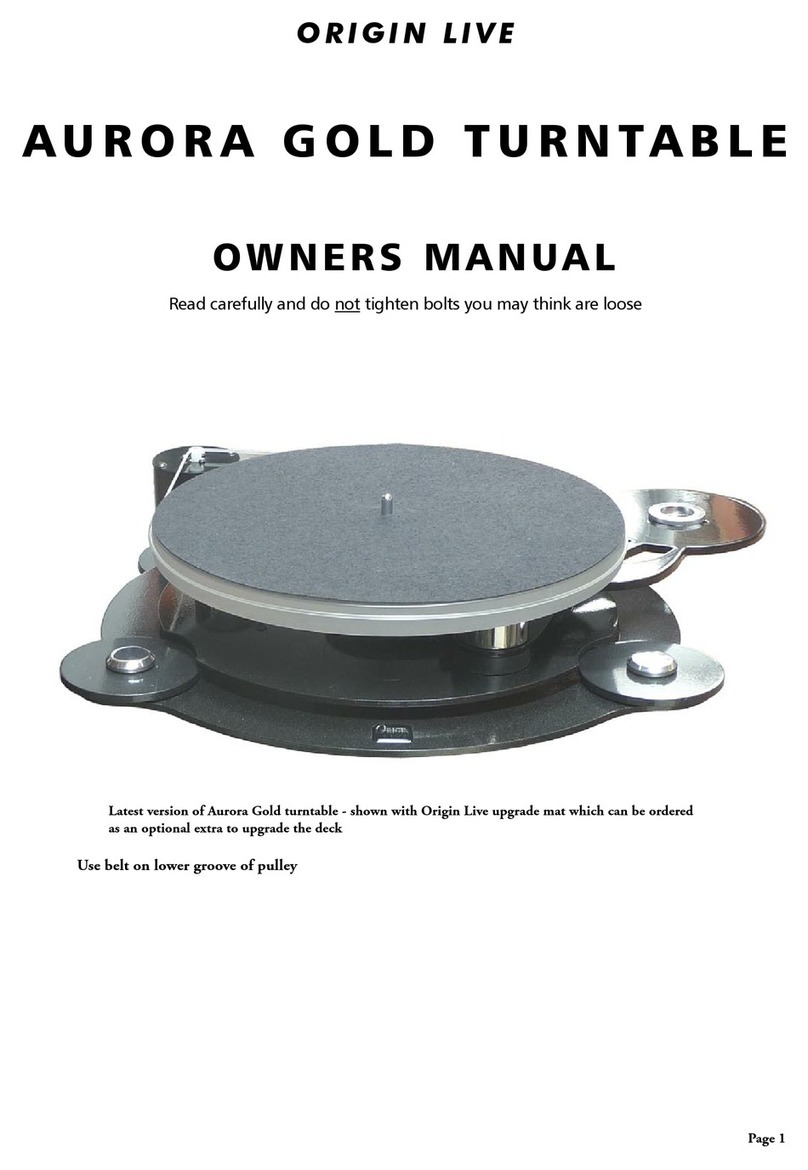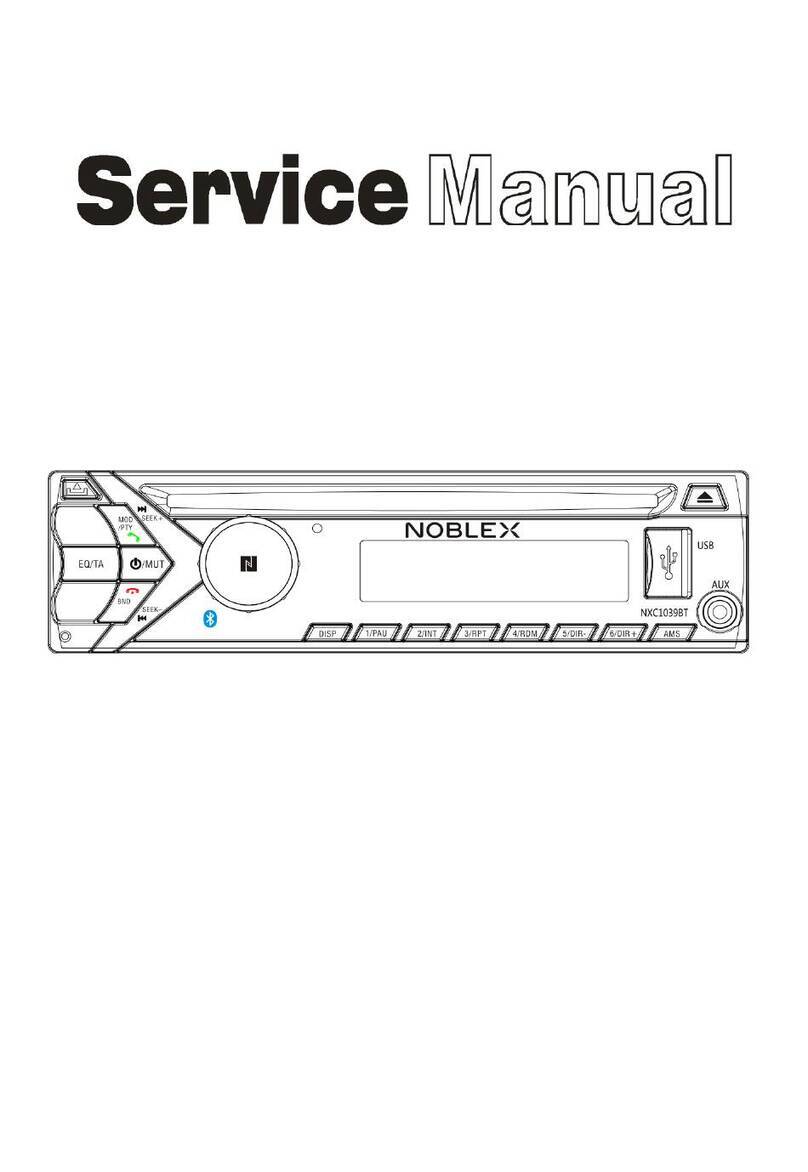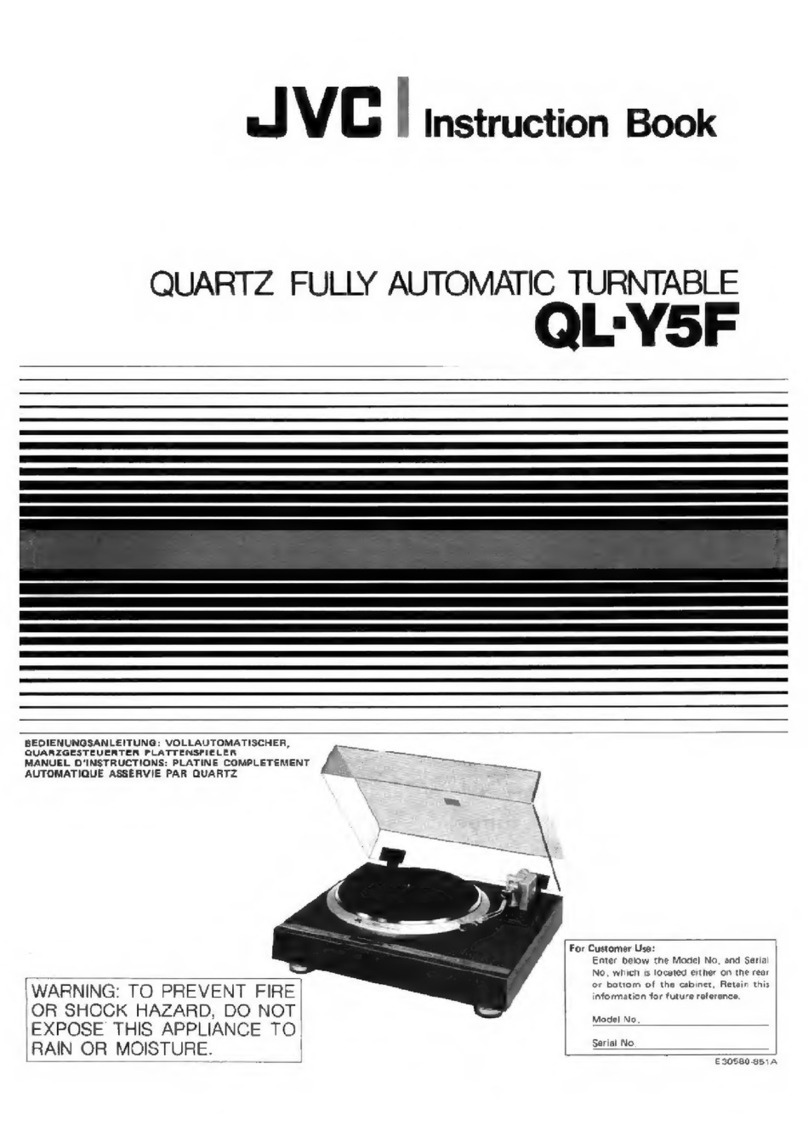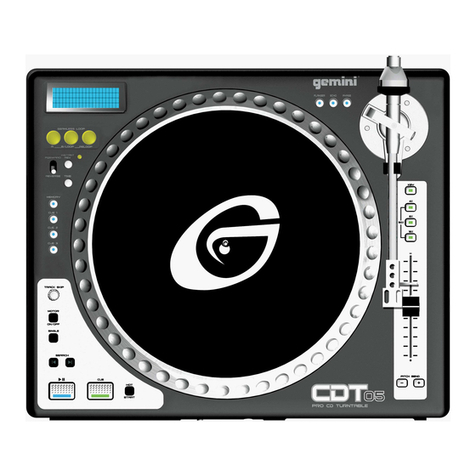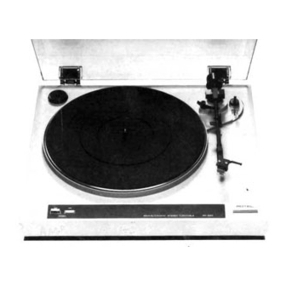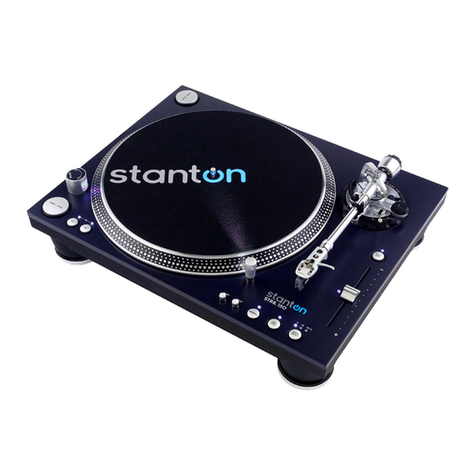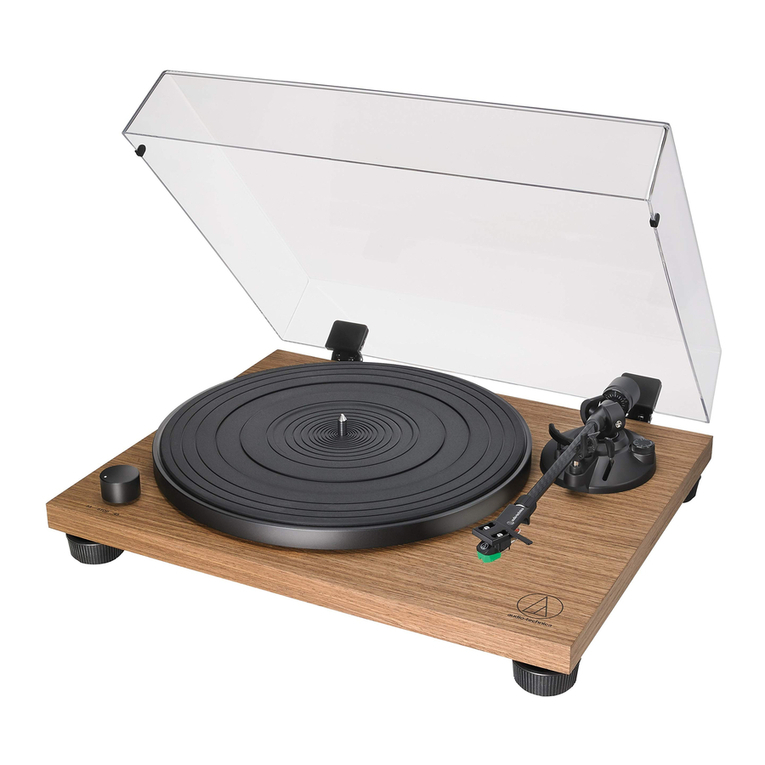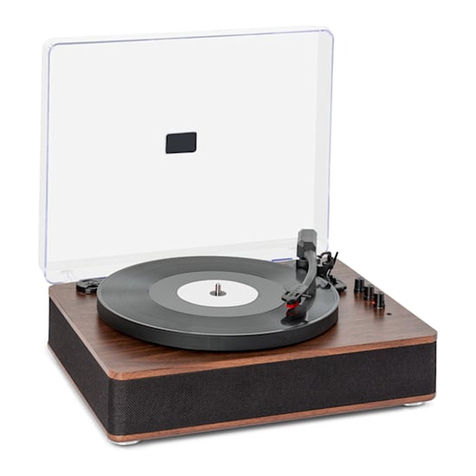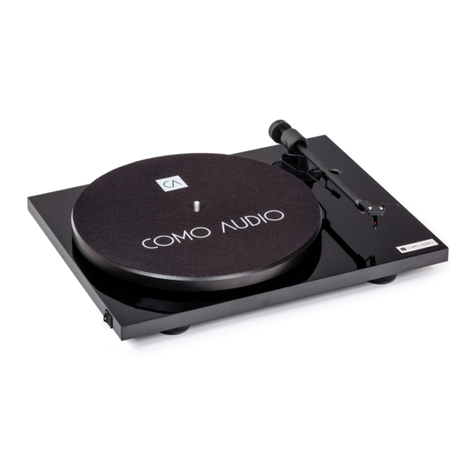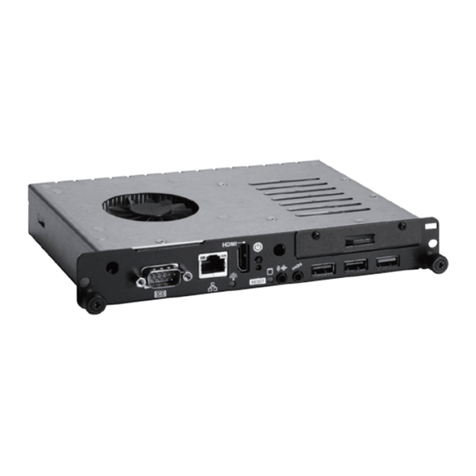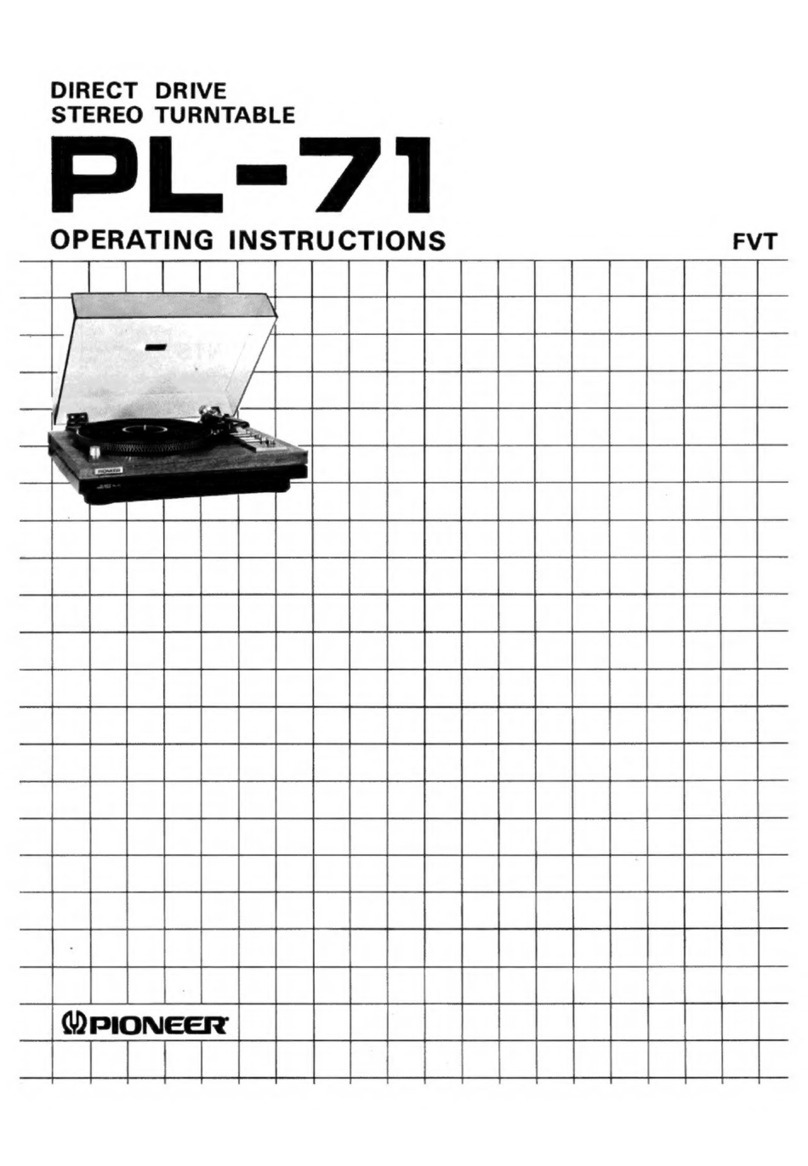CONNECT THE AR
Fit Cable Clip
For optimal performance, support the arm cable with a
clip fastened underneath the plinth. This helps prevent
vibration feeding into the arm.
Leave a slight droop in the cable so it's not tight.
Clipping the cable is not always possible or convenient
so may be omitted.
Connect the arm to your Phono stage / Amplifier
Plug the arm lead phono plugs into your phono stage or
amplifier. These can occasionally be a very tight fit to
sockets due to variations in plating thickness etc.
f this is the case, the manufacturers of plastic bodied
plugs advise you to heat the plugs with a hair dryer (or
similar) to soften them slightly till they fit easily onto
your phono stage / amplifier phono sockets without
causing potential damage or aggravation.
Avoid overheating the plugs to the point where they are
too hot to touch easily. Once fitted, you do not need to
reheat the plugs in future as they will maintain the
correct tightness.
Earthing arrangements
Optimal earthing arrangement is largely a matter of trial
and error as it depends on your phono stage / amplifier
design. Most vinyl systems hum slightly at high volume
levels, especially valve amplifiers. This can be reduced
sometimes by changing the earthing arrangement.
Some of our external tonearm leads have a different
number of earth leads so please read the section below
that relates to your case.
Single earth wire on tonearm lead-outs
f your arm has a single earth lead, try connecting the
blue tonearm earth wire to the first component in the
chain from the arm. For example if you have a phono
stage connected to an integrated amp, then connect the
arm earth wire to the phono stage. On some amplifiers
it's best to leave the arm earth disconnected to reduce
hum.
3 Blue Earth wires and a Black signal return earth
wire on tonearm lead-outs
f your arm has the configuration shown opposite, try the
following and settle for the configuration with least hum.
A) Connect only the wire denoted “arm earth” and leave
the “screen earths” and “black wire” disconnected.
B) Connect all 3 blue earth wires to earth.
Connect “2 blue screen earths” only and leave arm earth
disconnected.
f hum still persists disconnect blue wires from
earth and connect only the thin black wire
sprouting from the “white RCA plug” to the phono
earth.
Then try the options A to C but with the black wire
connected.
This process does not take long and is only
necessary if you experience hum.
Additional notes on connections
Avoid pulling the external wires at the base of the
arm as they are not indestructible and can become
detached if excessive force is used to manipulate
them. This also applies to the cable joints in the
phono plugs.
f you have XLR plugs, you will not get both plugs
through the mounting hole for the arm. The hole is
too small to allow the 2nd plug to go through as the
1st cable wire takes up space.
For this reason we normally fit only one XLR plug
and leave you to fit the other. Full instructions on
how to fit the other XLR are available on our web
site - see top navigation bar > Support > Solving
problems > Tonearms then scroll down to near end
of page.
Page 4
